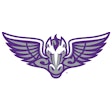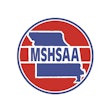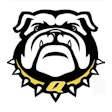
You know the old adage, "Anything that can go wrong, will go wrong." While it might seem like a pessimistic view, it's an important tenet for a facility manager. The safety of your patrons can be disrupted by negligent behavior of staff, insufficient safety equipment or unclear protocols, so it's important to identify potential risks and make sure you're prepared in the event that something doesn't go according to plan.
This process is called risk management, and it's three-pronged. As the leader of your organization, you should ensure you are prepared and educated; that your staff is informed and trained on all safety procedures; and that your space is safe for all patrons and staff.
Prepare yourself
You're responsible for every single person, staff included, who walks through your door, and their safety should be your number one priority. The reality is that many injuries that occur in athletic, fitness and recreation facilities are preventable with a bit of proper planning and education. You're at the front lines of risk management, and you are ultimately responsible for creating a culture of safety at your facility. When it comes down to it, it's better to be over-prepared than high and dry after an unfortunate incident, knowing you could have done something to prevent it.
All processes should be thoroughly laid out so that your staff doesn't have to fill in any gaps when implementing safety procedures. Equally important, these procedures and protocols need to be readily available for all staff so that every member of your team knows exactly what is expected of them each time they come to work.
It's also important to arm your staff with the appropriate safety equipment, medical devices and training. Set up training programs to go through first aid procedures, CPR, proper use of devices like AEDs, and any other relevant trainings.

Prepare your team
You can't be everywhere at every moment, so you need to make sure that your staff members are prepared and know the proper risk management procedures. This can be especially challenging for venues that host large events with hundreds of staff on hand at once, and even more challenging at venues that rely largely on student staff. Taking the time to thoroughly train your staff can save your facility from a costly lawsuit in the long run.
Measuring staff members' understanding of and compliance with safety protocols should be routine to ensure that risk management is firing on all cylinders every time your facility is in use. It can be helpful to plan emergency response tests for your staff members to give them more hands-on experience with a host of potential incidents. This will make them feel more prepared should an issue arise and will also reveal areas for needed improvement in training both new and current staff.
Your staff should feel empowered, prepared and responsible for the safety of every patron. Plus, you'll have the benefit of knowing that your team is trained and compliant with the proper risk management procedures, giving you peace of mind.
Prepare your space
You could have the most perfectly crafted protocols and expertly trained staff, but if your facility itself isn't safe, it's all for naught. The identification and evaluation of risks and preparedness of your facility is the cornerstone of risk management.
Start by taking an audit of potential safety hazards, as well as safety equipment and medical supplies (like AEDs and first aid kits) available in your space. Proper use of safety equipment should be laid out in all safety protocols and included in staff trainings. Specific locations of AEDs, first aid kits and other supplies should be known by all team members.
It may be helpful to take a look at the best practices laid out by organizations such as the National Center for Spectator Sports Safety and Security (NCS4) and see how your facility compares. This practice can help you outline areas for improvement. Once you've identified the weak links in the safety of your facilities, make sure to have a plan in place to implement needed improvements.
Laws are constantly shifting and changing, so risk management must be an ongoing process. It's important to make sure you're educated on the latest laws before something bad happens. To get more insights on risk management for your facilities, attend AB Show 2019 (Nov. 13-16 in Orlando). You'll hear case studies, troubleshoot your challenges with peers and learn from industry experts. Learn more and register at abshow.com/mag.
This article originally appeared in the May 2019 issue of Athletic Business with the title "Are you prepared?." Athletic Business is a free magazine for professionals in the athletic, fitness and recreation industry. Click here to subscribe.




































